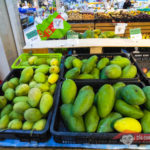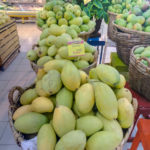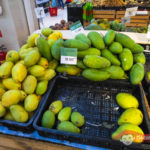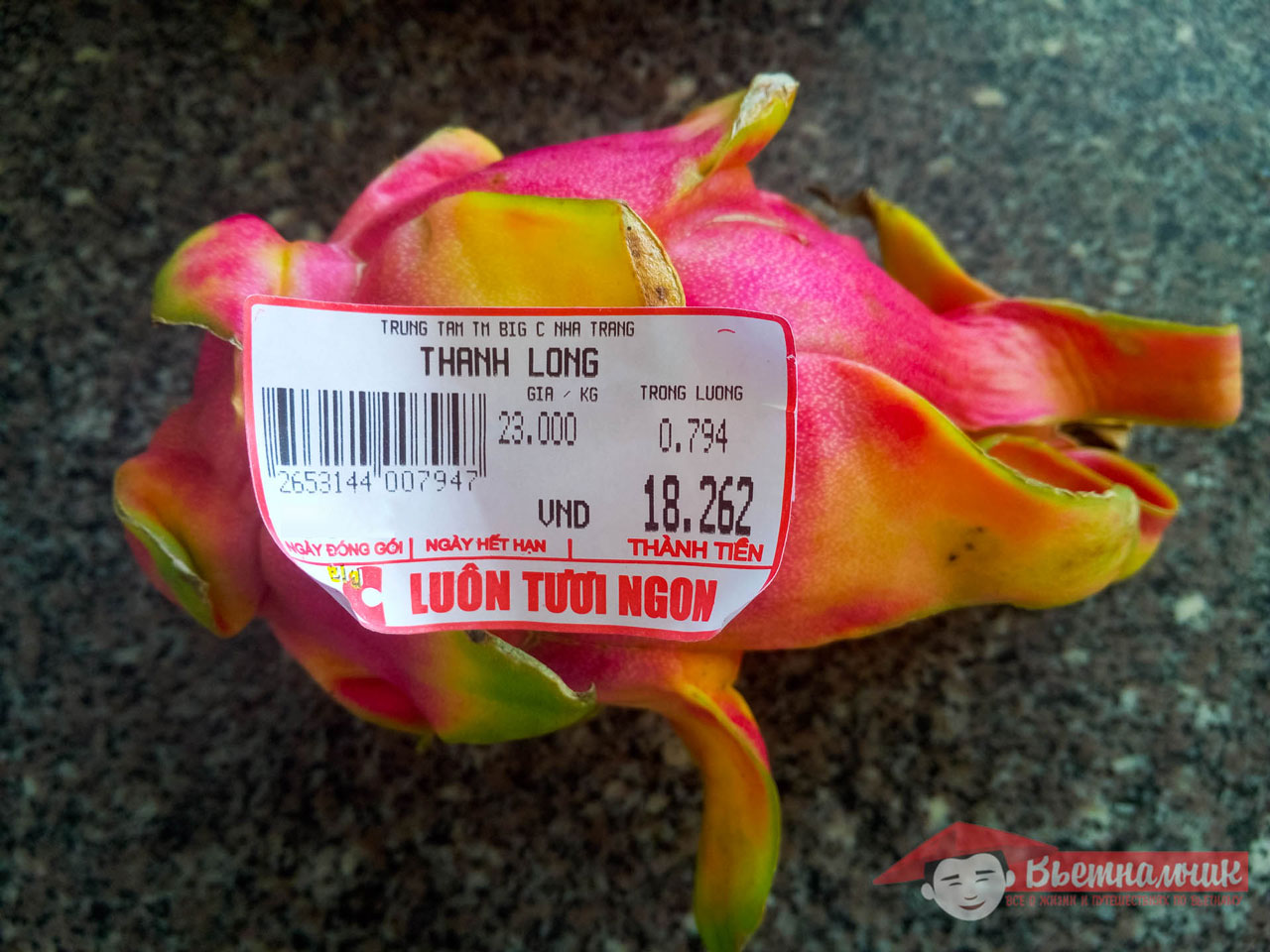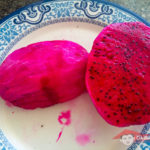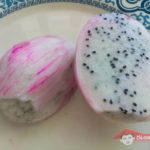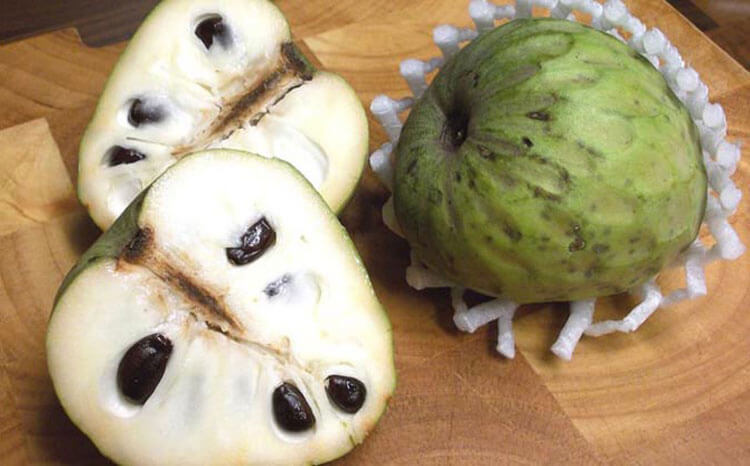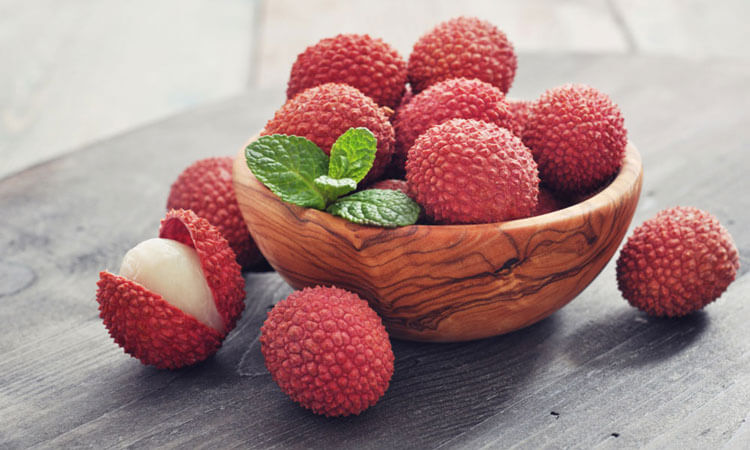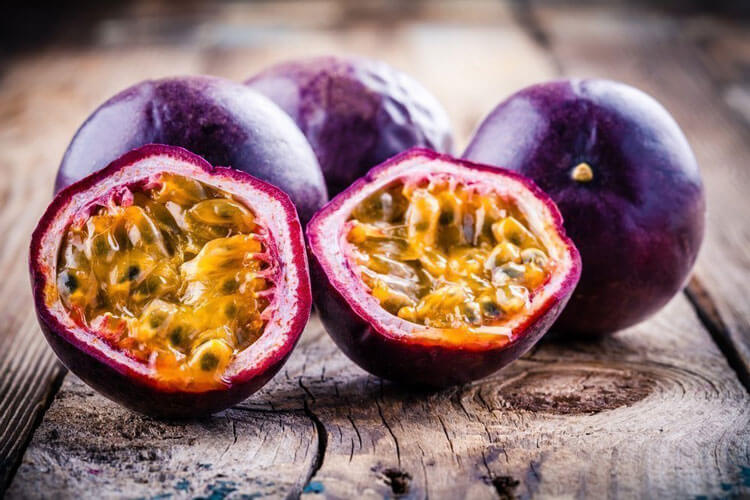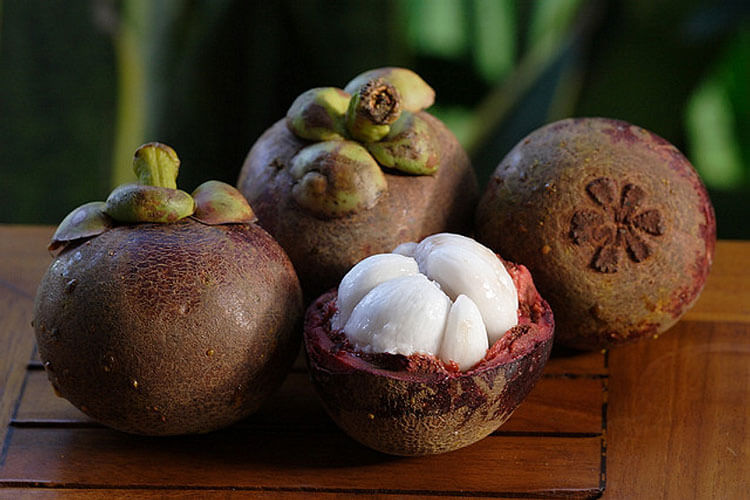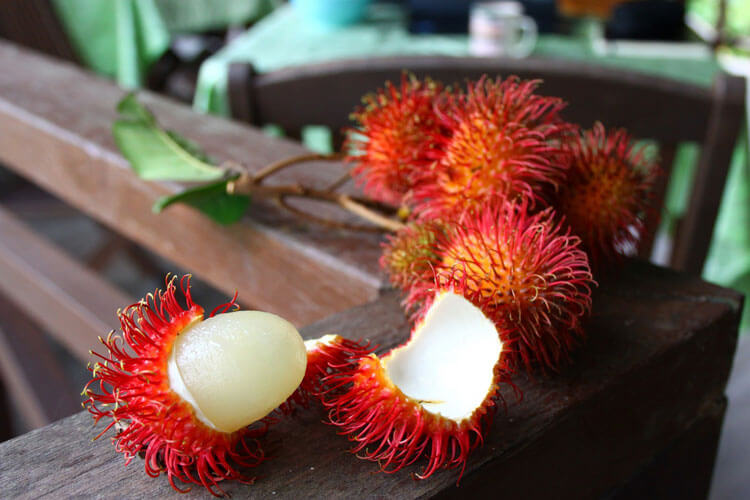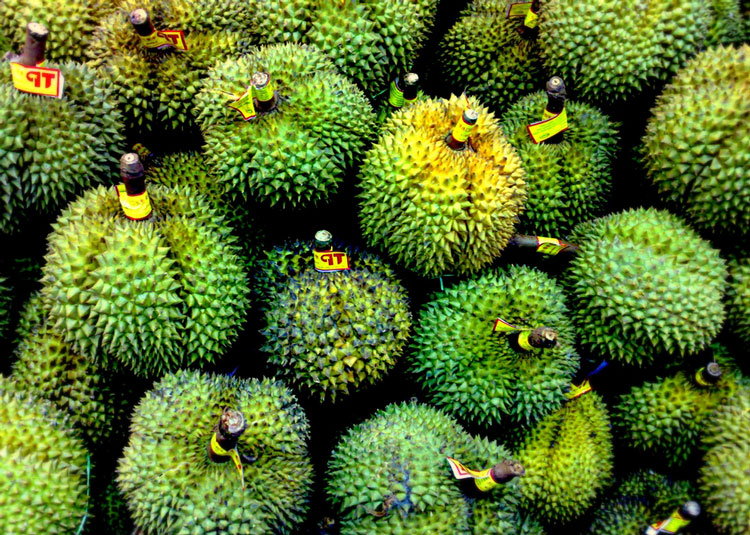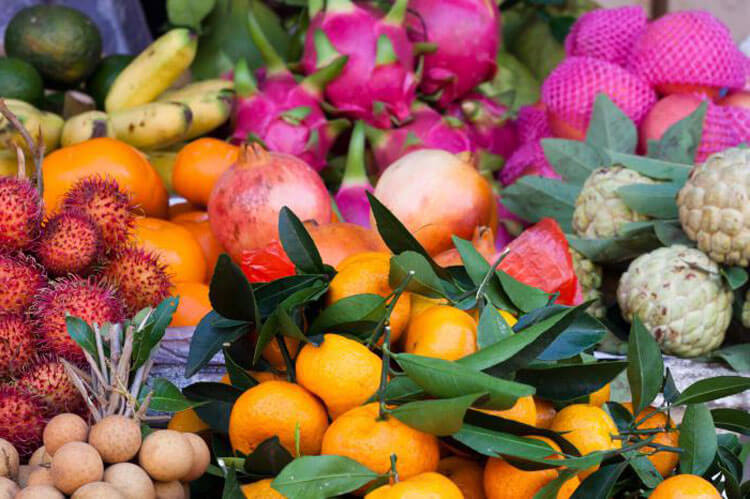Exotic Fruits Of Vietnam: Description, Prices, Photo
Many believe that the most fruity country is Thailand. However, this is not really true. Vietnam is one of the largest global suppliers of exotic fruits. The rich storehouse of useful micro-and macro-elements, as well as natural cultivation without chemical additives, makes these fruits quite valuable and in demand. In this article, we will tell all about exotic fruits in Vietnam and their cost based on Nha Trang.
Fruits In Nha Trang: Where To Buy?
There are several places where locals and tourists buy fruit:
- Fruit tents.
- Markets
- Shopping centers.
Fruit Tents
You will definitely not miss them. There are tents at almost every corner and it doesn’t matter where you live: in the European district or in the north.
Prices in tents are not much different, the only thing that on the 1st line they are likely to be higher because of high supply.
There is one place we recommend – These are 2 small shops located near Moonmilk (one of the few shops in Nha Trang where you can buy normal cheese and cottage cheese).
It is difficult not to notice because there are always a lot of tourists. Prices there are about the same as in shopping centers, and the choice of fruit is quite large.
This is the card that the sellers showed us:
- Fruits of Vietnam. Side 1
- Fruits of Vietnam. Side 2
Markets
There are only a few main markets in Nha Trang: Xom Moi, Cho Dam, and the Night Market. In the first two, you can find fruits, but we usually avoid this for several reasons:
- In all markets (especially on Xom Moi) it is a freeway for bikes. It is not very pleasant to realize that the fruits lie on the street where the Vietnamese drive and smoke on their motorbikes.
- In the markets, there are no fixed price tags and you have to find out the prices and bargain. And on the Cho Dam, even the locals don’t always manage to bring down the price.
Shopping centers
Read more in the article: “Shopping centers Nha Trang“.
The ideal option, in our opinion, is to go to the mall for fruit, it is clean, affordable prices and a wide selection.
There are quite a few hypermarkets in Nha Trang:
- Nha Trang Center
- Maximark
- Lotte Mart
- BigC
- Coop mart
- MegaMart (ex. Metro)
The prices plus or minus are the same, but we buy at BigC because we live 10 minutes away. Therefore, we will list the fruits on the basis of the range presented in BigC
Variety of fruits in Vietnam
So, we walked a bit along the BigC shopping center and took pictures of fruits and their prices in 2018. Let’s understand what’s what. Go!
Mango
English name: Mango
Vietnamese name: Xoài
Peak season: from February to May (also available throughout the year)
Prices: on average from 30,000 to 42,000 vnd (around $1.5 per kg.)
Mango is probably the most common fruit among foreigners, so it has the right to open our list. There are many varieties of Vietnamese mango: they can have different sizes, colors, and shapes. However, there are several most common varieties: “feline”, “elephant” and “Siamese.”
Vietnamese mango has a fairly rich flavor and creamy texture. Season: February – May. In autumn and summer, they are much smaller.
The ripeness of mango is determined by its color and softness: a ripe fruit has a rich yellow color with red or green dots. And if you gently put pressure on him, then he must be soft.
Mango is a source of vitamins A, B, C, D, and E, as well as amino acids, calcium, phosphorus, and iron. In addition to nutrients, this fruit also contains many sugars. In Asia, mango is often used in medicine.
It improves brain function and strengthens the heart. But be careful. Excessive consumption of this tropical fruit can act as a laxative. It is also best not to combine the mango with alcoholic beverages.
Petahaya – Dragon Heart
English name: Dragon fruit / Pitaya
Vietnamese name: Thanh long (red – Thanh long ruot do)
Peak season: from May to October, can be found at other times of the year
Price: from 23.000 to 50.000 vnd (~$1.5-$2 / kg.)
In fact, this fruit is one of the varieties of exotic cacti, like a vine. Pitahaya blooms several times a year, and only at night, with white flowers with a bright aroma. The fruits themselves resemble the shape of an elongated apple, covered with a skin that resembles scales.
The color of pitahaya can be either pink or red, and the tips of the leaves are green. In this context, the fruit has a pulp of white or beet hue, which is permeated, like kiwi, with black patches.
- Red pitahaya
- White pitahaya
To determine the mature fruit or not, you need to pay attention to the peel. If it is elastic, without cracks, and has a rich color, then you can safely buy such a fruit.
Pitahaya is the source of a whole group of vitamins B and C. Carotene, contained in both fresh and dried fruits, helps preserve and improve vision. Fiber improves digestion.
Cream Apple
English name: Custard Apple
Vietnamese name: Mãng Cầu
Season: All year, peak season – July
Price: 55.000 vnd ($2 – $2.5 / kg.)
The second name of this tropical fruit is cherimoya. The cream apple ripens on trees up to 10 meters high. The fruiting period begins in June and ends in August. Externally, the fruit resembles a large raspberry green.
The peel of a cream apple is very thick and strong so that the fruit can maintain its freshness for a long time. The flesh of the fruit is creamy and its texture is similar to cream, and in taste, it resembles vanilla pudding with apple slices.
Cherimoya must be determined by the color of the rind. The mature fruit is quite elastic and has a dark red color.
But not only the great taste and aroma attract in the fruit. It is a storehouse of vitamins (group B, C) and minerals (copper, manganese, iron, magnesium), and also has beneficial properties. Cream apple helps to improve brain function, and vision and helps get rid of a headache.
Lychee
English name: Lychee
Vietnamese name: Vải thiều
Season: the end of spring – the beginning of summer
Exotic fruit of an evergreen tree in a size resembling a walnut. Lychee season: April – June. The rind of the fruit is quite thin and has pointed tubercles and a pronounced red color.
Inside the litchi are a bone and light flesh, the consistency of which resembles jelly. The fruit has a delicate smell and sweet-sour taste.
To determine the ripeness of litchi, you first need to inspect the condition of the shell. The peel should be without any dents or cracks, bright (not dark) red. If you shake a ripe fruit, you can hear thuds. You also need to smell well: a strongly pronounced smell suggests that litchi is overripe.
Like most fruits, it has a large supply of nutrients. However, they should not get too carried away, as this can lead to allergies or problems with the oral mucosa.
The use of litchi is that this fruit improves memory, lowers cholesterol in the blood, and improves the workings of the digestive tract and the heart. It is also eaten with constipation and with proper or low-calorie meals.
Passion Fruit
English name: Passionfruit
Vietnamese name: Chanh dây
Season: All year
Price: 40.000 vnd (~$2 per kg.)
Passion fruit is the fruit of the Passionflower family. That is why it has such names as edible passionflower, granadilla purpura, or passionflower edible. The maturation of the fetus occurs in the period from January to April.
The passion fruit is similar in appearance to a large grape: an elongated shape with a plump skin and no seeds. Color can vary from yellow to deep purple. Moreover, the yellow passion fruit is usually larger than the violet, but the pulp in the second grade is much sweeter and more fragrant than in the first. The skin is smooth and shiny.
Inside the fruit is a jelly-like sour pulp with seeds, and its aroma resembles the smell of lemon. Passion fruit seeds are quite edible, they are used even in confectionery. But do not abuse them, because they can act as a sleeping pill.
The ripeness is determined by the condition of the peel: the mature fruit should be free of dents and cracks, it will also weigh more than not ripe.
Passion fruit contains many beneficial trace elements and a large complex of vitamins. This tropical fruit has a positive effect on the gastrointestinal tract and helps to remove uric acid. In addition, passion fruit is used in medicine to lower body temperature.
Mangosteen
English name: Mangosteen
Vietnamese name: Măng cụt
Season: May to August
Price: 30.000 – 40.000 vnd (~$1.5 kg.)
In Vietnam, this tropical fruit is revered as a king. Exotic fruit grows on evergreen trees, which at the peak of their development can reach 25 meters. The peak season is from May to August.
The size of mature mangosteen is from 3 to 7 centimeters in diameter. The peel is quite juicy, dark purple in color with red streaks at fractures, with a thickness of 7 to 12 millimeters. The juice of the skin is bitter and difficult to excrete.
Mangosteen pulp is white in color and divided into separate lobules. Therefore, in this context, it resembles garlic. In the fruit, slices can occur on a pip. The taste of the fruit resembles citrus mixed with peach.
The key point when choosing ripe mangosteen is elasticity. With light pressure, the peel should spring up a little. Also, pay attention to the integrity of the skin: cracks indicate that the fruit is already overripe.
Mangosteen is the source of all that is necessary for good development and growth. Fruit is used in medicine to strengthen the heart muscle and against cancer cells.
Rambutan
English name: Rambutan
Vietnamese name: Chôm chôm
Peak season: May to June
Price: 65.000 vnd (~ $3 / kg.)
Rambutan is more like an exotic flower than a fruit. It can have both white and red skin with long. These villi have a rich red color.
Under the unusual skin of the rambutan, there is translucent flesh from white to pale pink. The texture is jelly-like, pitted, and quite juicy. The taste can be sweet or sour-sweet, it is determined by the rambutan variety.
When choosing a ripe fruit, first of all, pay attention to its color. When ripe, it changes its color from yellow-orange to saturated red. Therefore, it is worth choosing fruit with a fairly bright color. Rambutan season: May – June.
Tropical fruit has large reserves of carbohydrates, proteins, beta-carotene, various trace elements, vitamins C and B, as well as nicotinic acid. The stone of the fruit contains healthy fats and oils.
Rambutan is used to treat diarrhea and dysentery, as well as an anti-worm agent. Periodic consumption of this fruit favorably affects the condition of the skin.
Durian
English name: Durian
Vietnamese name: Sầu Riêng
Peak season: from May to October, can be found at other times of the year
Price: ~ 50 000 vnd (~ $2 / kg.)
In Vietnam, durian got the name “fruit-stinker.” It grows on trees with a height of about 50 meters. Durian season – from May to October. There are 30 types of this fruit, but only 9 of them are allowed to be eaten.
Externally, the fruit looks quite intimidating: the skin is very powerful and spiky, green-brown in color. This strong “armor” hides beneath the soft yellow flesh of a tender and moderately thick consistency with two or more oval pits.
Those who could taste durian say that the fruit has an incomparable taste. However, because of the disgusting smell, most simply refuse to eat it.
There are several methods for determining the ripeness of the durian. The first is the smell. The brighter the smell from the cut, the better. The second is the definition of sound. It is necessary to knock out the fruit, and if gurgling is heard, then it speaks of its maturity.
Durian – quite healthy fruit. It helps cleanse the body of toxins. Durian also found its place in medicine: this fruit is used to lower the temperature and in the fight against jaundice. However, be careful, it increases blood pressure.
Fruit Pricing Table
| Vietnamese Fruits | Price VND / kg | Price USD / kg |
|---|---|---|
| Mango (Xoài) | 27.000 – 36.000 | ~ $1.5 |
| Petahaya (Thanh long) | 23.000 – 30.000 | ~ $1.5 |
| Cream apple (Mãng Cầu) | ~55.000 | ~ $2 |
| Lychee (Trai mit) | ~26.000 | ~ $1.5 |
| Passion fruit (Chanh Dầy) | ~39.000 | ~ $1.5 |
| Mangosteen (Măng Cut) | 20.000 - 25.000 | ~ $1.5 |
| Rambutan (Сhôm Сhôm) | ~67.000 | ~ $2 |
| Durian (Chi Sầu riêng) | ~50 000 | ~ $2 |
Fruit Transportation From Vietnam
Every tourist who wants to bring fruits from Vietnam as a souvenir raises the question: “How can I bring them on the plane?” Today there are many restrictions on the export of any items, this also applies to fruits.
How Much Can You Carry?
It is allowed to transport exotic fruits in sufficiently large volumes. However, it is possible to take only 25 kilograms per person for free, but hand luggage is also included here – 5 kilograms.
To prevent fruits from spoiling along the way, they are placed in special baskets that can be bought in the same place as the tropical fruits themselves. They cost quite cheaply – from 30,000 to 50,000 dong.
What Fruits Can Not Be Exported From Vietnam?
But the fruits that can be taken out of Vietnam:
- mangosteen;
- mango;
- longan;
- pitahaya;
- passion fruit;
- pomelo;
- guava;
- cream apple and so on
To do this, it is enough to buy a basket, pack everything up and drop it in the luggage (on some airlines, it is allowed to take fruits into the cabin as hand luggage).
Well, that’s all.
If you have any questions, ask in the comments!




